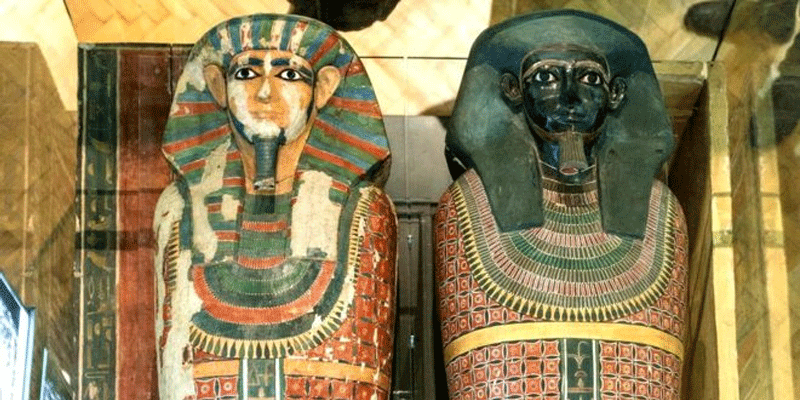
DNA test confirms two mysterious ‘brother mummies’ had different fathers
A long-believed speculation turned out false after a recent DNA test that revealed the 4000-year-old mummies from Egypt were actually related on the mother side with two different fathers. These popular mummies were nicknamed as “Two Brothers” by the officials at the museum in which they were kept.
The DNA test revealed that the mummies belonged to two men from the elite class of Egypt who was named “Khnum-Nakht” and “Nakht-Ankh”. They were actually born of the same mother but had a different father which makes them half-brothers. The study was conducted by researchers from the University of Manchester by the use of DNA sequencing.
Konstantina Drosou, a researcher from the University of Manchester said that the journey to obtain the results of this test was very exhausting but it finally delivered the accurate result. A small but highly significant piece of ancient history was added to the puzzle behind Egypt’s ancestry. Ancient DNA tracing has numerous implications while enabling the study of our past and ancestors.
The ‘brother-mummies’ were found in a burial site located in Cairo in the year 1907. These mummies date back to the year 1,800 BC. The Inscriptions present in the respective coffins suggested that these brothers were sons of a local governor whose name is unknown. The inscriptions also suggested that the brothers were born of a single mother named, Khnum-aa. After this, the mummies were named as “Two Brothers”.
In the year 1908, a team of researchers concluded that these skeletons showed different kind of skeletal morphologies that suggest a missing family based relationship. The inscription depicted that one of these mummified brothers were adopted. However, DNA analysis suggested that they were related from their mother’s side while being brought up by different fathers.
“Ancient DNA” from the teeth of these mummies were extracted in the year 2015 which was followed by hybridization capture for the Y chromosome fractions as well as the mitochondrial which was sequenced using the next generation method. The findings of this study were published in a journal named Archaeological Science. It revealed that both Khnum-Nakht and Nakht-Ankh had a similar M1a1 mitochondrial haplotype which suggested a relationship from the maternal side. The sequences for the Y chromosomes were incomplete but showed variations suggesting a different father which made them half-brothers.


